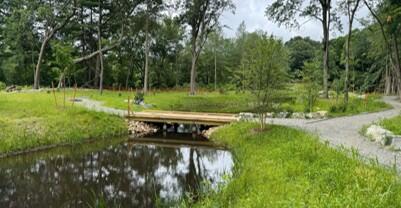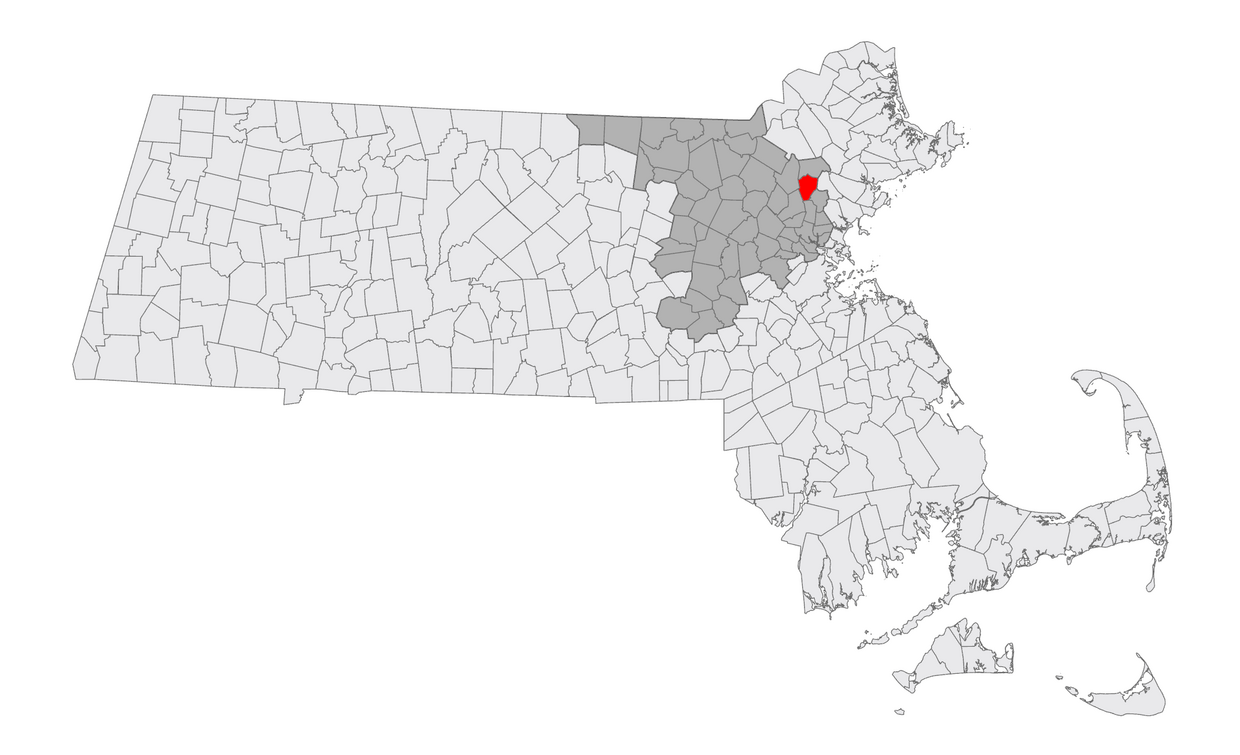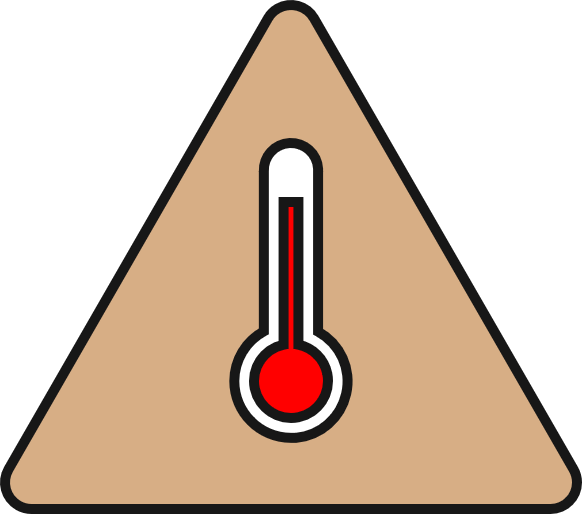Reading Overview
Reading is a town in Middlesex County, Massachusetts, in the upper Northeastern part of the state. They have a population of 25,223 people and an area of 10 square miles. Climate hazards present in Reading include inland flooding, drought, extreme temperatures, severe winter storms, and other severe weather.
Reading's MVP 2.0 Core Team
The MVP 2.0 Core team is a group of municipal staff and Community Liaisons who work together to identify local climate resilience priorities and implement a project that supports those priorities.
Reading's Community Liaisons include representation from:
- Humane Society of the US volunteer
- New resident and parent
- Retired guidance counselor and board member for Reading Teachers Association with a prior career in crisis intervention
- Teacher and Sustainability Committee Coordinator at Pike school in Andover
- Dress for success
- Crayons to cradles
- Youth gardening at middle and elementary schools
- Meals on wheels
Reading's Core Team includes municipal representation from:
- Procurement and Contracting
- Director of Operations
- Public Works Director
- Director for Equity & Social Justice
- Executive Assistance Operations
Reading Community Resilience Priorities
Community resilience priorities are practical actions created during the MVP 2.0 Planning Grant process. They were shaped through community input, thoughtful discussion about changing local needs, and feedback from Environmental Justice groups and other community members.
Reading, in partnership with their Core Team, identified the following priorities through the MVP 2.0 process.
| Priorities | Potential Actions | ||
|---|---|---|---|
| Priority 1: Improve communication between Town and community members. | Potential Actions:
| ||
| Priority 2: Increase access to affordable housing and reduce cost burden for vulnerable residents. | Potential Actions:
| ||
| Priority 3: Reduce impacts of urban heat island effect, flooding and ice in the Downtown and priority areas. | Potential Actions:
| ||
| Priority 4: Improve and expand local/regional transportation options. | Potential Actions:
| ||
| Priority 5: Reduce food insecurity by improving access to resources and expanding support. | Potential Actions:
| ||
| Priority 6: Improve community health and well-being through parks and greenspaces. | Potential Actions:
| ||
| Priority 7: Support local small businesses, activate the Downtown, and expand commercial options. | Potential Actions:
| ||
| Priority 8: Protect and enhance access to natural areas, and improve local waste management. | Potential Actions:
| ||
Reading's MVP 2.0 Seed Project: Community Communication
Reading received funding to implement a Seed Project that addresses one or more of their climate resilience priorities. They will work to build stronger connections between the Town and community members through expanded and enhanced multi-directional communication mechanisms.
The activities of this project include:
- Identify and implement new, culturally sensitive and effective mechanisms for distributing information on emergency preparedness.
- Identify vulnerable populations and establish protocols for meeting their needs in emergency situations.
- Expand the town’s communication tools and networks to better inform residents about events and initiatives as well as to receive input from the community.
- Explore new ways to reach out to vulnerable populations who may not be on social media.
- Install multiple solar powered message and notice boards strategically around town to provide updates to the community.
- Explore creating a welcome packet/guide to new and current residents about opportunities offered by the town.
Reading's Action Grant Projects
The MVP Action Grant provides funding to communities that want to take important steps to prepare for climate change, such as dealing with extreme weather, flooding, rising sea levels, and extreme heat.
Maillet, Sommes, Morgan Constructed Stormwater Wetland (FY23)
This project commenced construction of the stormwater wetland system at Maillet, Sommes, and Morgan which will help create additional offline stormwater storage (a regional priority for Mystic River watershed), reduce inland flooding within the local area as well as downstream communities, and improve water quality. The project will also improve stream bank stabilization and ecological stability while improving open space development and trail connectivity.

Resilient Facilities Project: Finding solutions for flood-prone sites that serve priority populations (FY25)
This ongoing project will increase the climate resilience of priority populations by 1) identifying the top flood-prone facilities in each participating Upper Mystic municipality that serve or host priority populations, 2) prioritizing the sites with stakeholders and community members, and 3) selecting the top 10 sites for concept design. The intention is to tee up a priority list of projects serving priority populations that each municipality will individually carry into the design/permitting phase.








